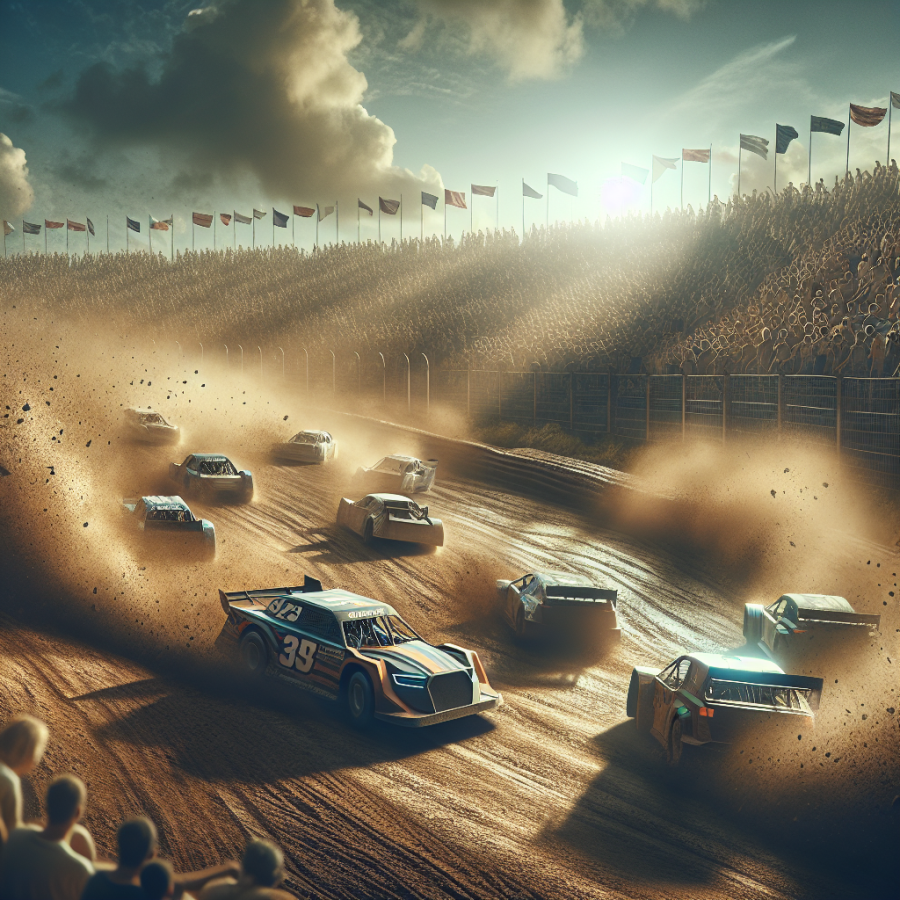Experiencing the Rush: The Allure of Dirt Track Racing
Experiencing the Rush: The Allure of Dirt Track Racing
There's an undeniable allure to dirt track racing that has captivated the hearts of motorsport enthusiasts for generations. The high-octane adventure begins with the roar of engines and the distinct scent of race fuel mixed with the earthiness of the dirt track itself.
Racers competing in this high-speed ballet demonstrate exceptional skill and courage, navigating tight corners and slippery surfaces with an agility that both exhilarates and terrifies. Spectators are often seated close to the action, where they can feel the vibrations of passing vehicles and witness every skilled turn, power slide, and daring overtake up close.
One of the most compelling aspects of dirt track racing is its unpredictability. Unlike the smooth and consistent surfaces of asphalt racetracks, a dirt track's loose surface is constantly changing, ensuring no two laps are ever exactly the same. This variability requires drivers to have a keen sense of their car's handling and an ability to adapt to rapidly changing conditions on the fly.
Power sliding, a technique where drivers turn into the slide, allowing the car to drift around a corner at high speeds, is both an essential skill and a crowd-pleaser. This maneuver is not just about showmanship – it's a crucial technique to maintain speed and control. As drivers master the delicate balance of throttle and steering input, they create an artful performance that's as strategic as it is spectacular.
Another draw to dirt track racing is the accessibility and camaraderie amongst races and fans. Many dirt track events foster a community atmosphere where spectators can interact with drivers and crews, often gaining a firsthand look at the vehicles and the maintenance that goes into preparing for a race. This level of interaction creates a personal connection that's rare in many other sports.
The diversity of vehicles on the dirt track also adds to the thrill, from sprint cars with their high-powered engines and massive wings to the more stock-appearing late models and modifieds. Each class brings its own style and challenges, creating a dynamic show that keeps the audience engaged throughout the event.
The rush of dirt track racing isn't just in watching the adverse effects of dirt being thrown into the air or the cars teetering on the edge of control—it's also in the passion and the community that's been built around the tracks. The thrill extends well beyond the drivers to the fans, the families, and the crews, making dirt track racing a uniquely immersive and electric experience.
Read also:
Mastering the Art of Single Scull Rowing: Techniques and Tips
Navigating the Turns: The Skills and Thrills of High-Speed Dirt Racing
Navigating the turns in high-speed dirt racing is an art form that requires a unique skill set, honed through experience, instinct, and precise adjustments. Mastering the turns is often what separates the novices from the veterans in this high-octane sport. Dirt track racing, with its loose surfaces and lack of grip, requires drivers to approach each corner with a strategy and execute with precision.
The first skill that drivers must develop is the art of the slide. Known as 'drifting' in some motorsport circles, sliding in dirt racing is not just for show—it's a crucial technique for maintaining speed through corners. Drivers enter turns at high speed, initiating a slide by turning the car toward the corner and then counter-steering to control the direction of the slide. The goal is to 'rotate' the car in such a way that it is pointing straight out of the turn, allowing for maximum acceleration down the straightaway.
Throttle control is another crucial aspect of navigating turns. In dirt racing, the surface offers little traction, making smooth control of the throttle key to maintaining the balance of the car throughout the turn. Too much throttle too quickly can deepen the slide and potentially lead to a spin-out, while too little throttle can cause the car to lose its drift and bog down, costing valuable time.
One cannot simply rely on the car's mechanical grip; drivers must understand the dynamic balance of the car, known as 'weight transfer.' As a dirt racer enters a turn, inertia pushes the weight of the car to the outside. Skilled drivers use this to their advantage by manipulating the car's weight distribution to enhance grip where it's most needed. This might include techniques like left-foot braking to shift weight forward and increase the front tires' grip or using the throttle to transfer weight to the rear to prevent the rear from swinging out too far.
Adapting to the track conditions is another vital skill. Dirt tracks can change drastically over the course of an event, from tacky and fast to dry and slick. A driver must be attuned to the surface's changing grip levels and adjust their racing line and car setup accordingly. Taking different lines through a turn, such as the high line or the low line, can mean the difference between maintaining speed or losing it. Furthermore, as the race progresses, seasoned drivers will pay attention to the development of the track, where the dirt is getting pushed, and where the fastest lines are forming to adjust their strategy in real-time.
Experiencing the Rush: The Allure of Dirt Track Racing
The high-speed turns, the roaring engines, the flying dirt clods – all of these elements combine to make dirt track racing one of the most exhilarating motorsport experiences available. At its core, dirt track racing is about the sheer adrenaline rush of navigating a loose surface at high speeds, testing the limits of both driver and machine.
Understanding the Dynamics of Dirt
One of the most captivating aspects of dirt track racing is the unique challenge presented by the track surface. Unlike asphalt racing, the dirt surface is constantly changing, affecting grip and requiring a high level of skill from the drivers. Each lap can be drastically different as the conditions evolve, making it a constant learning process. Drivers have to adapt rapidly to shifting traction, ruts, and grooves that develop on the track, making strategic thinking as crucial as their quick reflexes.
The Beauty of the Slide
A signature move in the world of dirt racing is the power slide or 'drift.' This high-skill maneuver involves the driver intentionally oversteering, causing the rear tires to lose traction, while they skillfully maintain control to slide around a turn with precision. It's a breathtaking spectacle for fans and a testament to a driver's skill. The slide is not just for show – it's often the fastest way around the track due to the loose nature of the dirt surface.
The Thrill of the Chase
In dirt track racing, the excitement doesn't just come from the race leader. The thrill of the chase often provides some of the most memorable moments. Drivers jostling for position, overtaking, and executing strategic moves provide constant entertainment. With the visibility sometimes limited by dust and the ever-present chance of sliding out of control, each race is packed with unpredictability and excitement.
Engines and Innovations
Though often considered a 'grassroots' level of motorsport, dirt track racing is a hotbed of innovation, particularly in the engineering of the vehicles. Teams constantly tweak and adjust their cars to gain an edge over the competition. From suspension setups tuned for maximum traction to engines modified for the perfect balance of power and control, technical innovation is just as much a part of dirt track racing as the skill of the drivers.
Building Bonds with Fans
Another unique aspect of dirt track racing is its close-knit community.




